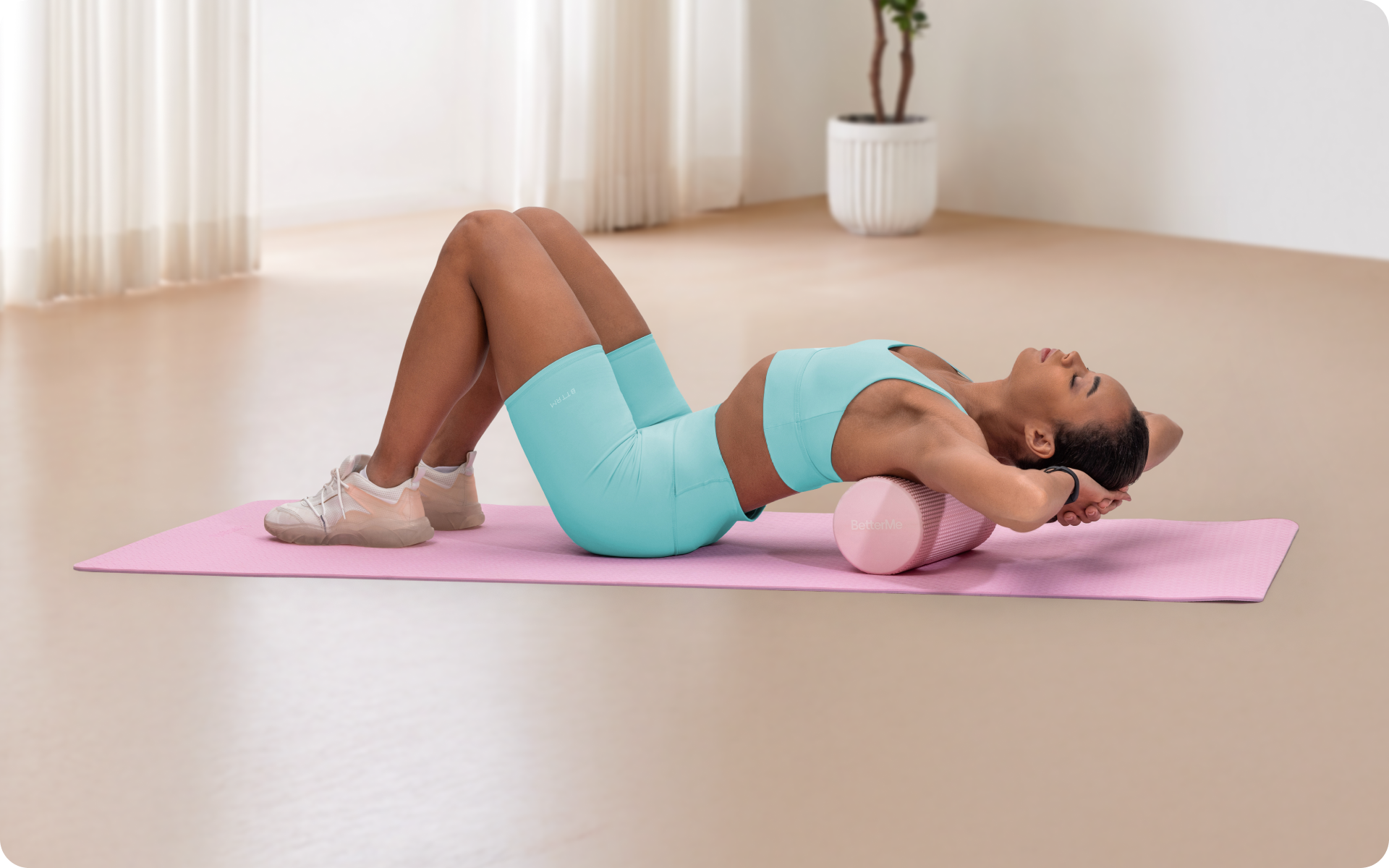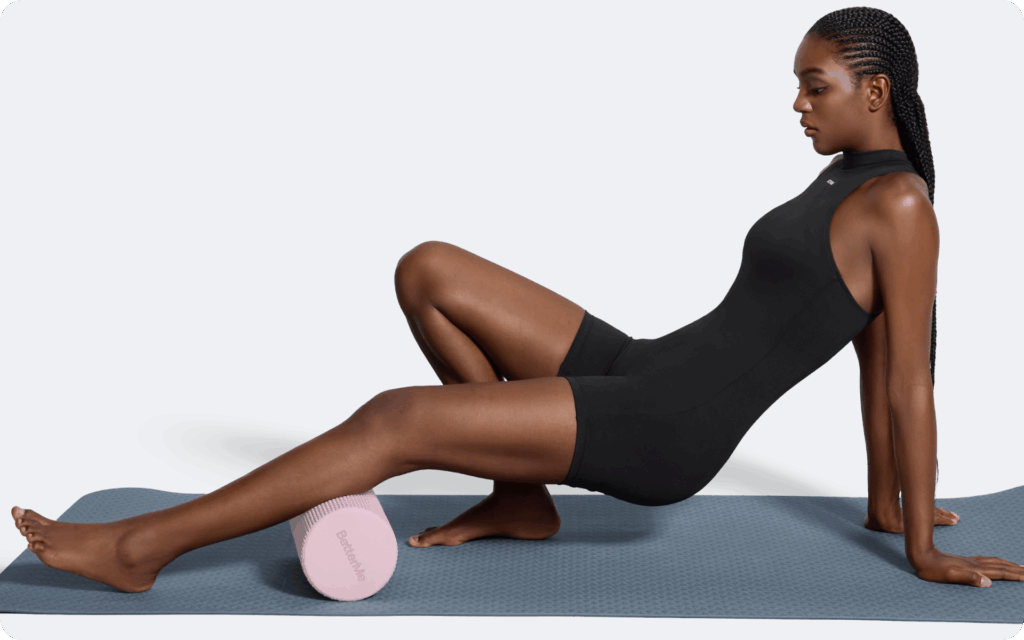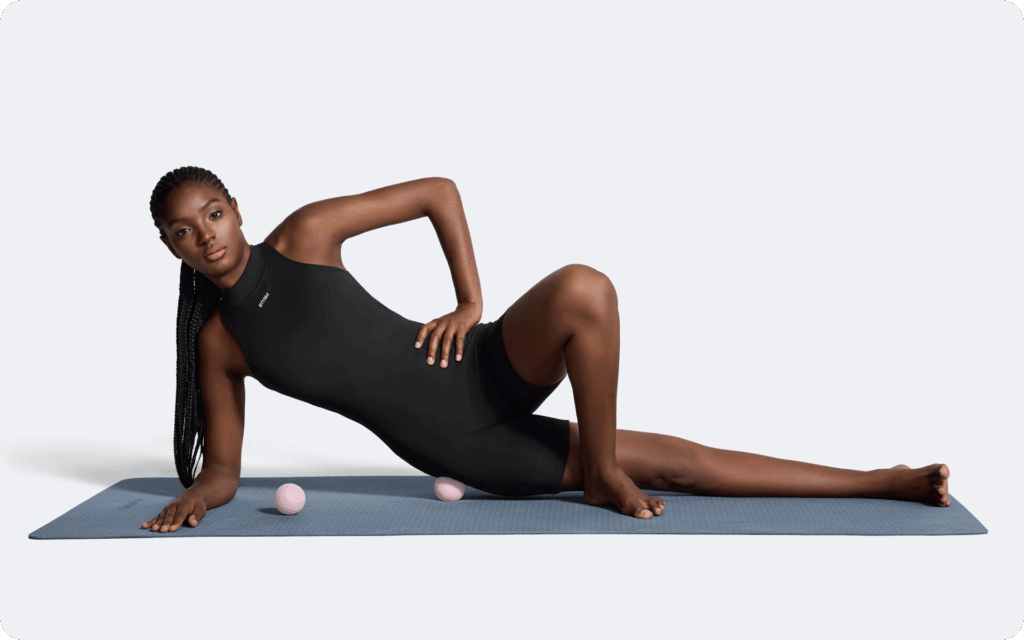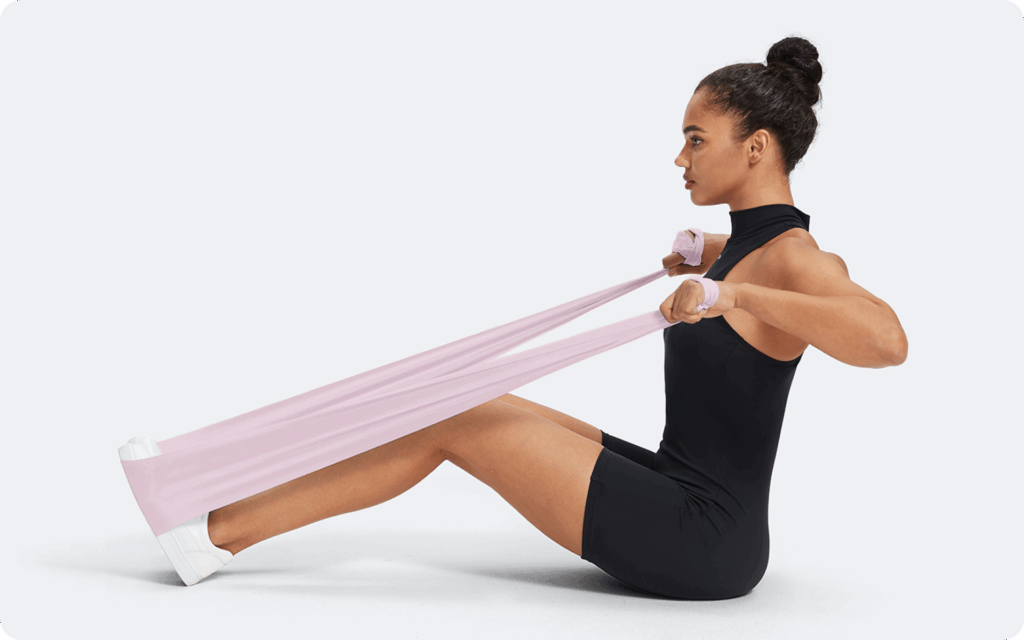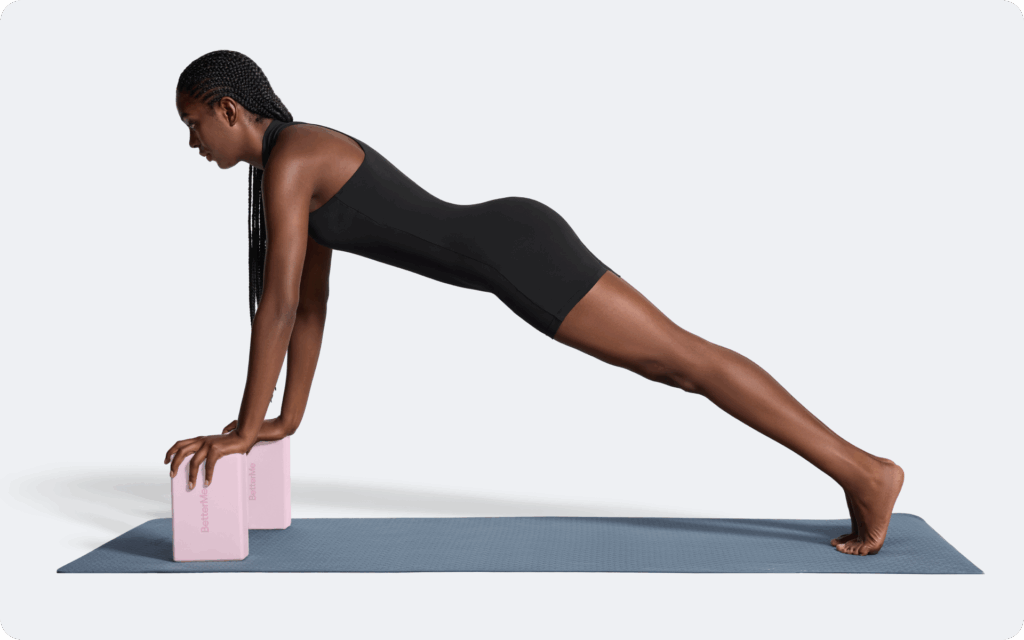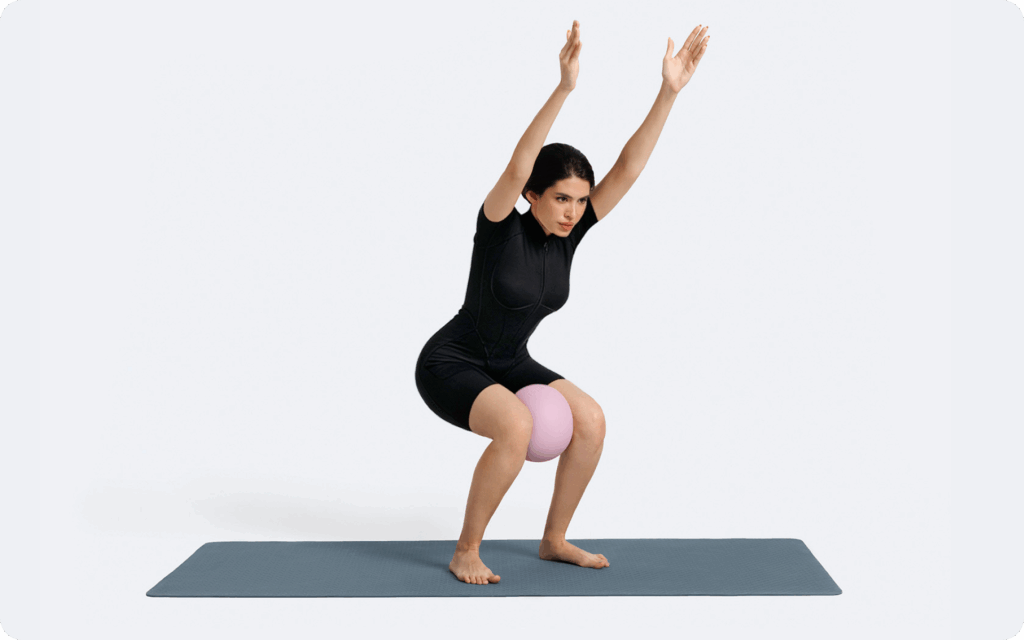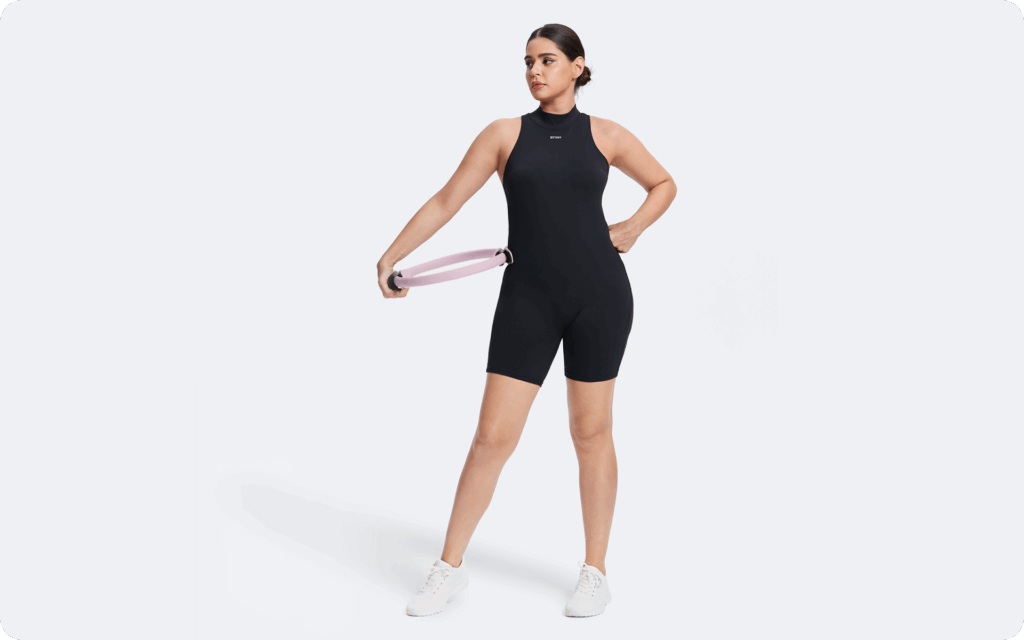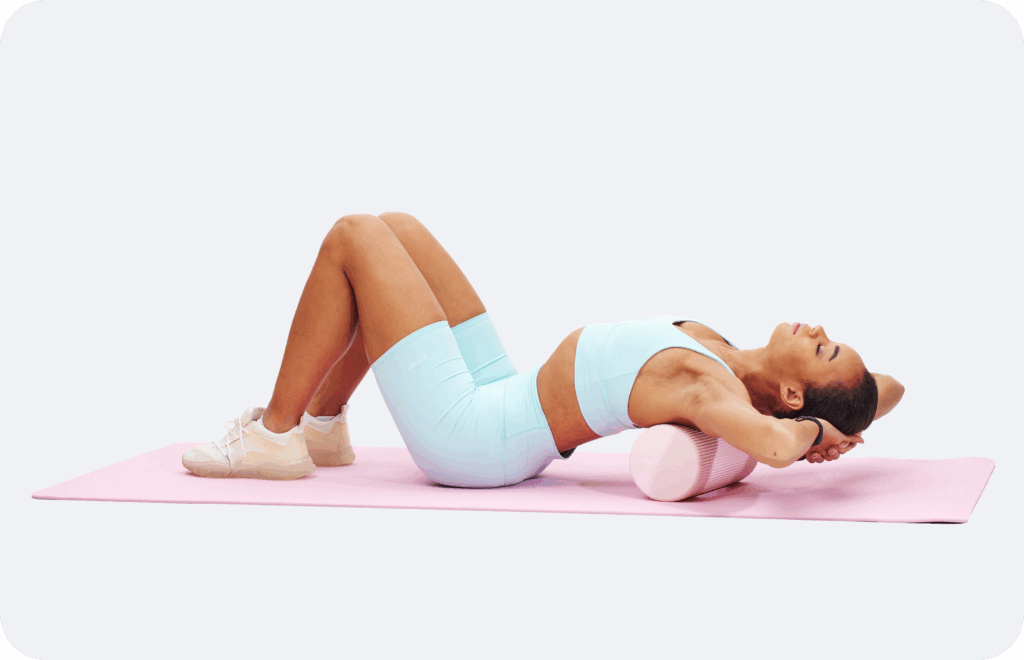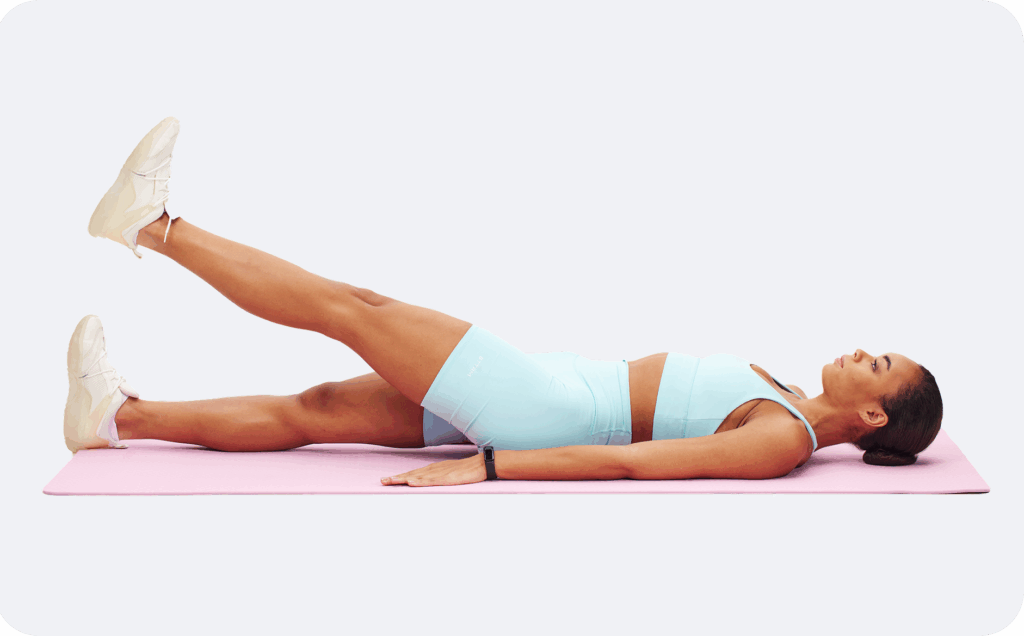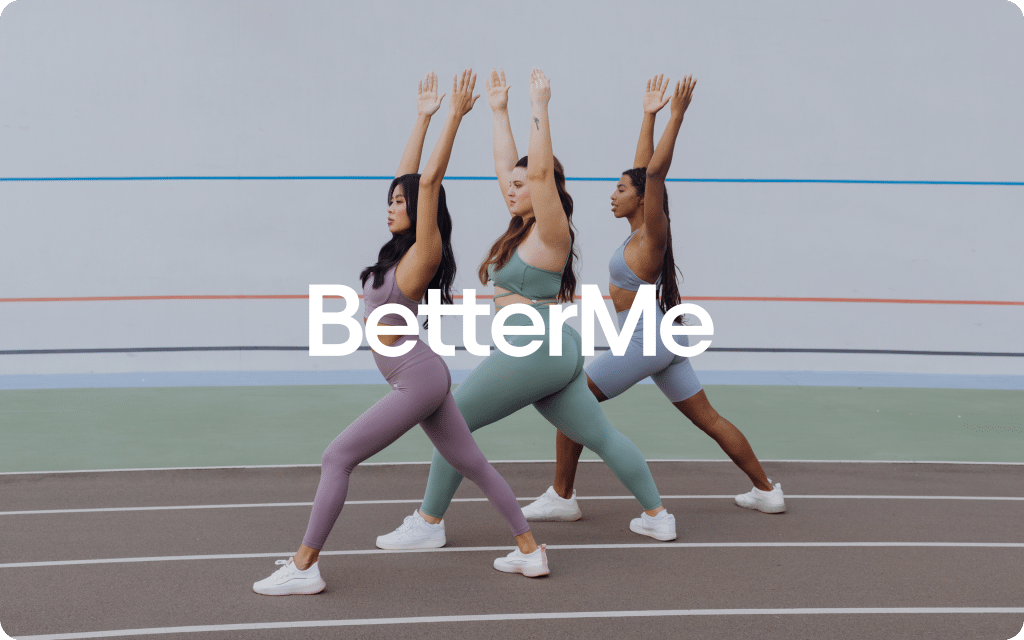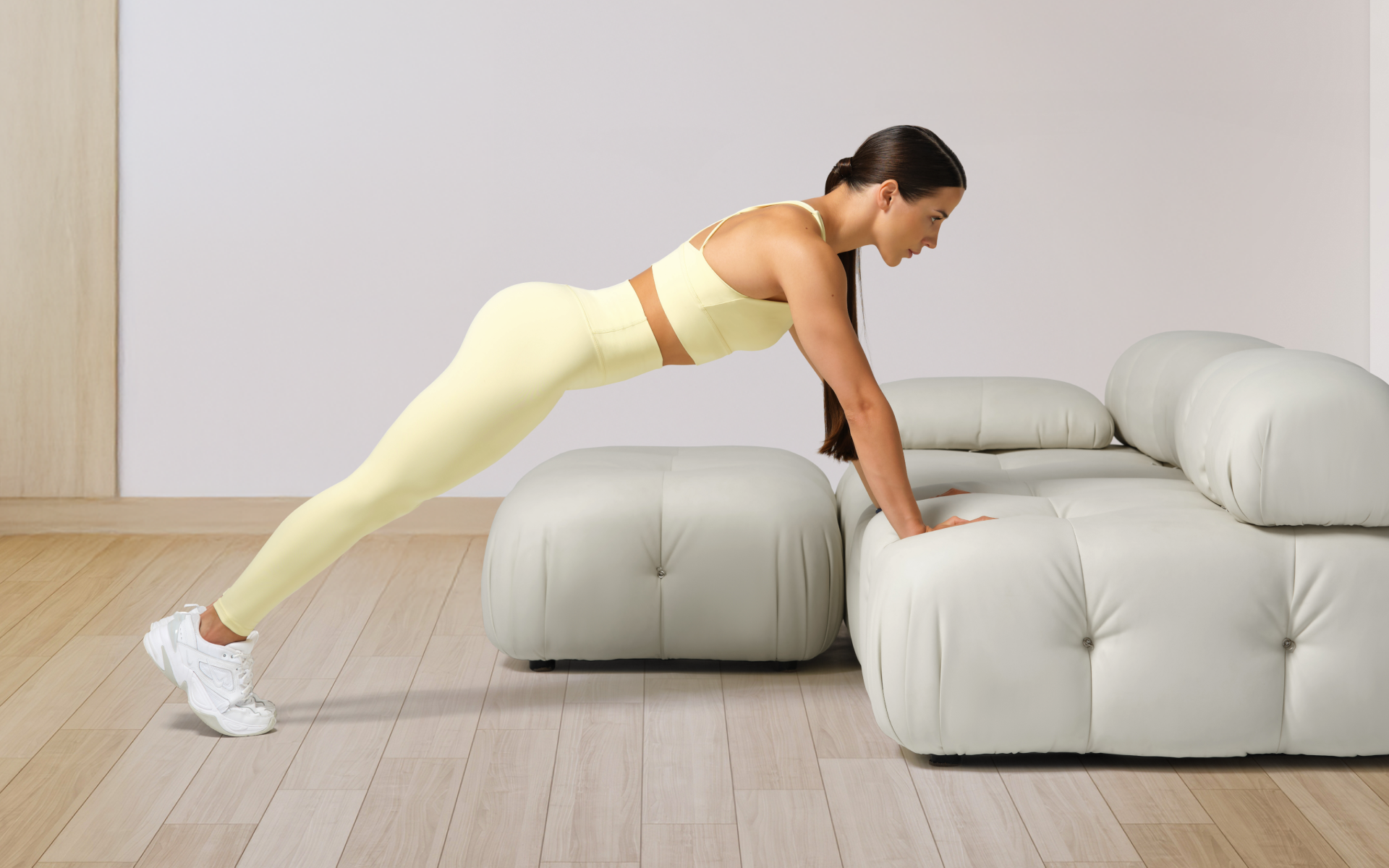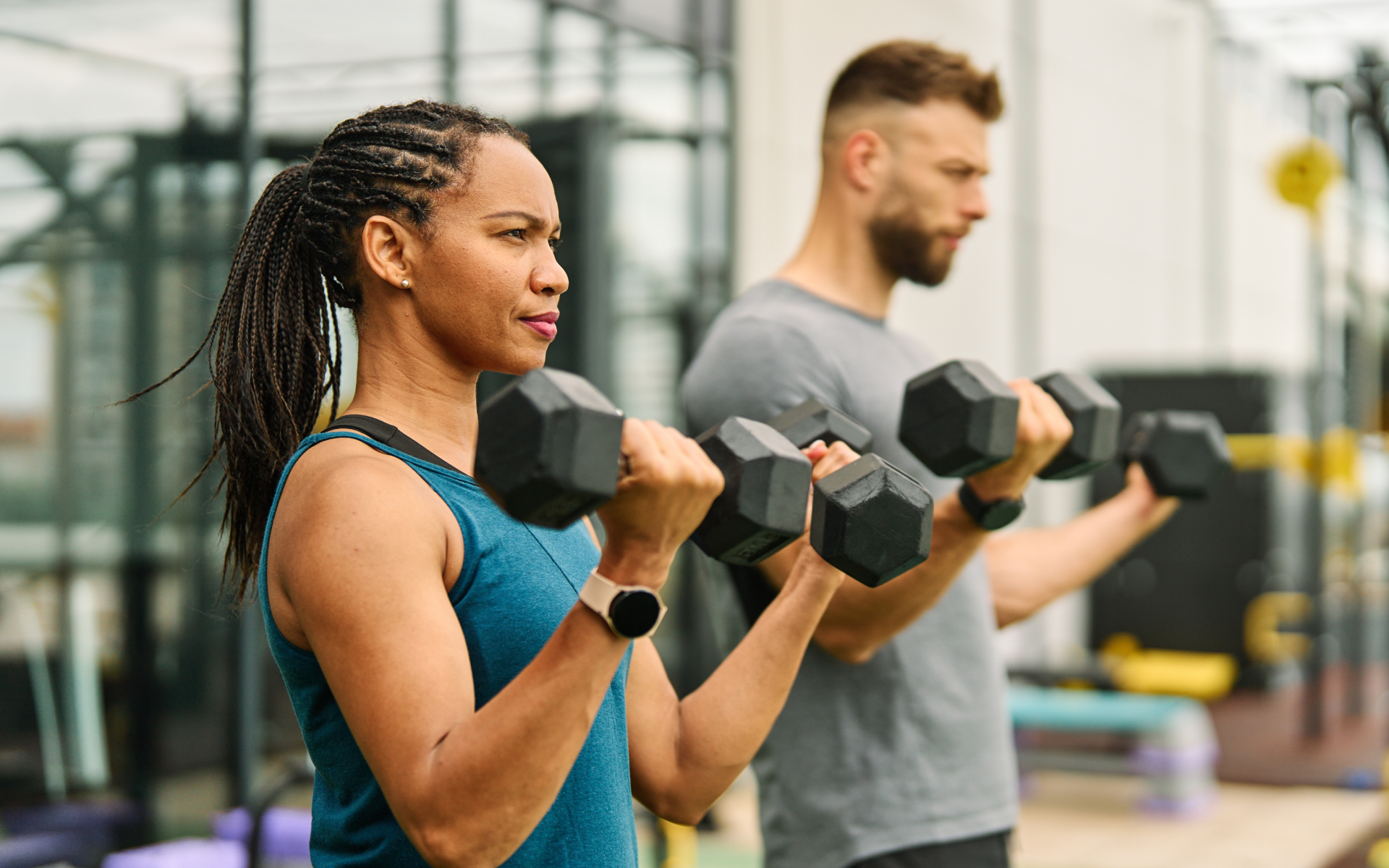Recovery is an essential, yet often overlooked, component of any fitness routine. It’s during this time that the body repairs, grows stronger, and readies itself for the next workout.
Studies have continually shown that recovery techniques such as stretching, resistance-based movements, and myofascial release speed up the body’s ability to repair and prepare for subsequent physical challenges (1, 2).
For individuals who are aiming to maximize performance and reduce the risk of physical strain , investing in tools that are specifically designed for post-workout recovery can make a world of difference.
Here’s a guide to some must-have gym recovery equipment that can aid in your post-workout routine.
Always consult with your physician before starting any recovery fitness program to ensure it is suitable for your specific needs.
What Gym Equipment Can Speed up My Recovery?
Effective recovery equipment bridges the gap between effort and rest, which ensures your body gets the support it needs to stay healthy and progress toward your fitness goals.
Some ideal gym equipment to consider for post-workout recovery are as follows:
1. Foam Roller
Foam rolling, or self-myofascial release, is a tried-and-true method for easing muscle tension and supporting tissue elasticity. By using a foam roller, you apply pressure to tight or sore areas, which encourages blood flow and reduces post-exercise soreness (DOMS – delayed onset muscle soreness) (3).
Spend 1-2 minutes rolling on larger muscle groups such as your quads, hamstrings, or back, focusing on tender spots to release tension.
How to Incorporate: Use the foam roller as part of your cooldown after workouts or during a dedicated recovery day to enhance circulation and relax your muscles.
2. Massage Ball and Peanut Massage Ball
Both the massage ball and peanut massage ball target tight areas with precision. The smaller massage ball is excellent for problem spots such as the calves, feet, or shoulders, while the peanut-shaped ball is designed for back post-workout recovery and neck muscle release. These tools act as portable deep-tissue massages, breaking down adhesions and supporting range of motion (4).
How to Incorporate: Press the ball against a wall or lie on it to apply controlled pressure to sore spots for 30-60 seconds per area. Find the problem area and slowly move within that joint’s range of motion. For example, if you’re using it on a spot behind your shoulder blade you would want to lie on your back and raise your arm as if making a snow angel. This can help stretch out the muscles behind the shoulder blade and ultimately work that knot out of your back. The peanut massage ball is particularly effective for rolling along the back gently and is designed to have your back rest right in the indented center of the ball.
3. Long Resistance Band and Pilates Loop Bands
Resistance bands are versatile tools for low-impact post-workout recovery exercises. The long resistance band offers adjustable resistance, which makes it ideal for gradual muscle stretching and joint mobility work (5). The loop bands cater to focused strength recovery, targeting smaller muscle groups such as the glutes, hips, or shoulders.
How to Incorporate: Use resistance bands during active stretching or perform light strength exercises such as banded glute bridges or shoulder rehab exercises. These bands allow for fluid, controlled movement, which minimizes strain on recovering tissues.
4. Yoga Block
A yoga block provides stability during stretching and mobility exercises, which helps you maintain proper alignment. For individuals who are recovering from tight hamstrings, hip discomfort, or lower-back tension, the block acts as a supportive extension of your body (6).
How to Incorporate: Use the yoga block to deepen stretches such as a seated forward fold or to assist in poses such as the pigeon stretch, where flexibility may limit your range.
5. Sculpt Dumbbells
Strength training doesn’t necessarily need to take a backseat during gym recovery. Gentle routines using soft silicon dumbbells allow you to maintain muscle tone without overwhelming fatigued muscles. Lighter weights can engage stabilizing muscles and promote circulation without adding unnecessary strain (7).
How to Incorporate: Perform slow, controlled bicep curls or tricep extensions with the dumbbells during recovery-focused active movement sessions.
6. Soft Pilates Ball
This small, inflatable ball enhances core and stability exercises, which is essential for proper muscle activation during recovery. Its use can promote balance and support controlled movement, preventing compensation from overworked muscles (8).
How to Incorporate: Add the Pilates ball to movements that engage your core, such as a Pilates bridge. By squeezing the ball between your knees, you can activate inner thigh muscles while protecting your lower back.
7. Toning Pilates Ring
The Pilates ring creates resistance that targets muscles with precision, particularly smaller stabilizing groups that may get neglected in larger workouts. It’s perfect for low-impact post-workout recovery days as it encourages mindful movement.
How to Incorporate: Use the ring for exercises such as seated side squeezes that target your obliques. This strengthens your core while reducing pressure on overworked or fatigued areas.
How to Choose Gym Recovery Equipment that Suits You
The key is to choose tools that align with your unique needs and recovery goals. Selecting the right equipment speeds up post-workout recovery and enhances your overall fitness performance. Here’s how to make an informed decision:
- Understand Your Recovery Goals
Start by identifying what you want to achieve with your recovery routine. Are you looking to reduce muscle soreness, improve mobility, or enhance flexibility?
If your goal is muscle recovery after intense workouts, tools such as foam rollers or massage balls are excellent choices (3). For improved mobility and flexibility, yoga blocks or resistance bands can make a significant impact (6).
Knowing your recovery goals will help you prioritize equipment that serves your specific needs, making your recovery effort more targeted and effective.
Reasons why BetterMe is a safe bet: a wide range of calorie-blasting workouts, finger-licking recipes, 24/7 support, challenges that’ll keep you on your best game, and that just scratches the surface! Start using our app and watch the magic happen.
- Consider Your Fitness Level
Your fitness level plays a crucial role in determining the type of recovery equipment you should use. Beginners may benefit from soft, low-impact tools such as Pilates balls or light resistance bands that promote safe and controlled movements.
At the same time, more advanced fitness enthusiasts may prefer tools such as high-density foam rollers or toning Pilates rings for deeper muscle engagement and recovery.
Choosing equipment that matches your fitness level ensures you use tools effectively without adding unnecessary strain to your body.
- Factor in Your Past Strain and Sensitivity History
If you’ve had areas that feel more sensitive or previously overworked , certain types of equipment may be more appropriate than others.
For example, gentle tools such as peanut massage balls are good for delicate areas such as the spine or neck, while yoga blocks offer support during stretching without overloading joints or muscles. If you experience overworked muscles in specific areas, targeted tools such as massage balls may offer greater relief.
Always consult a healthcare professional or physiotherapist if you’re unsure of what equipment is safe for your condition.
- Assess Your Available Space
The amount of space you have for recovery equipment matters more than you might think. Compact tools such as resistance bands, massage balls, or Pilates rings are easy to store and use even in small spaces. Larger items, such as foam rollers or yoga blocks, may require a dedicated area for proper use.
If space is limited, look for multi-functional tools that can serve several purposes and give you versatility without taking up much room.
- Balance Budget and Quality
Recovery equipment comes in a wide range of price points, so it’s important to balance cost and quality. While budget-friendly options exist, ensure that the tools are durable and effective. For example, opting for a sturdy, medium-density foam roller may save you from frequent replacements.
If you intend to use the equipment regularly, investing in higher-quality items can provide better support and enhance your recovery experience in the long term.
- Think About Convenience and Portability
If you travel often or prefer to work out in different locations, portable and lightweight post-workout recovery equipment can be a game-changer. Compact items such as resistance loop bands, massage balls, and Pilates rings are easy to pack and use anywhere.
Convenience ensures you stick to your recovery routine, even when you’re not at home or in the gym.
- Align with Your Training Style
Your training style should influence the gym recovery tools you choose. For strength-focused individuals, foam rollers and massage balls are often essential for muscle release. At the same time, those practicing yoga or Pilates will benefit from gear such as yoga blocks or grip socks for added stability and support.
Matching your equipment to your workout style creates a seamless transition from training to recovery.
- Listen to Your Body
Above all, listen to your body’s needs. Post-workout recovery is deeply personal, and what works for someone else may not be ideal for you. Pay attention to how your muscles respond to different tools and adjust accordingly. If one type of equipment feels ineffective or uncomfortable, don’t hesitate to try alternative options.
Your body will often tell you what it needs – make sure to respond thoughtfully to those signals.
- Test Tools Before Committing
If possible, test the recovery tools before you purchase them. Many gyms or fitness centers have equipment you can experiment with. By trying out foam rollers, resistance bands, or massage balls, you’ll get a better sense of what suits your needs and comfort level. This trial method can save you from investing in equipment that may not work for you.
Read more: How to Recover Faster from Workouts: Essential Tips for Muscle Recovery
How Can I Speed up My Recovery After the Gym?
Prioritize Protein and Proper Nutrition
After an intense gym session, your muscles need fuel to repair and rebuild. Consuming protein within 30-60 minutes post-workout helps support this process (9). Protein provides amino acids, the building blocks your muscles use to repair microscopic tears that are caused by exercise (10).
Pair protein with carbohydrates to refill glycogen stores, the energy reserves in your muscles (11). For example, a post-workout meal may include grilled chicken with quinoa or a protein shake with a banana. Balanced nutrition consistently throughout the day also ensures your body has the resources it needs for ongoing recovery.
Hydrate
Hydration plays a crucial role in recovery. Losing fluids through sweat can lead to muscle cramps, fatigue, and delayed muscle repair. When you’re dehydrated, blood flow is less efficient, which means nutrients and oxygen take longer to reach your recovering muscles (12).
Rehydrate with water during and after your workout. For high-intensity or long-duration sessions, consider electrolyte beverages to replenish sodium, potassium, and magnesium lost through sweat (13). To learn more about the post-workout recovery shakes, check out our in-depth article on the topic.
Aim to drink at least 16-24 ounces of fluid within two hours post-exercise and listen to your body’s thirst signals.
Incorporate Active Recovery
Active recovery, which involves performing low-intensity exercises, has been shown to speed up the removal of lactic acid from muscles and reduce stiffness (14). Activities such as walking, cycling at a light pace, or doing yoga can boost circulation without adding strain to fatigued muscles.
Dedicate one or two days a week to active recovery instead of intense training. This will allow your body to recuperate while staying active, ensuring you maintain momentum in your fitness routine.
Don’t Skip Stretching
Stretching after your workout reduces tightness, helps maintain flexibility, and decreases the risk of muscle imbalances. Dynamic stretches during your cooldown promote blood flow to fatigued muscles, while static stretches (holding a position for 20-30 seconds) work to lengthen and relax them (15).
Consider stretches that target major muscle groups involved in your workout. For example, if you’ve been focusing on legs, incorporate hamstring and quad stretches, and for upper-body days, stretch your shoulders, chest, and back. Uncover the surprising benefits of post-workout stretches in our past article.
Get Quality Sleep
Sleep is perhaps the most underrated recovery tool. Your body does the majority of its muscle repair and growth while you’re asleep (16).
Aim for 7-9 hours of quality sleep every night. To optimize sleep for post-workout recovery, establish a consistent bedtime routine, minimize screen time before bed, and ensure your sleeping environment is cool, dark, and quiet.
Whether you’re looking to simply pep up your fitness routine, jazz up your diet with mouth-watering low-calorie recipes or want to get your act together and significantly drop that number on your scale – BetterMe: Health Coaching app has got you covered! Improve your body and revamp your life!
Explore the Benefits of Recovery Equipment
Specialized recovery equipment can provide targeted support for faster muscle recovery . For example, foam rollers help release built-up tension and support blood flow through a technique called self-myofascial release (2). Massage balls focus on smaller areas of tension, while resistance bands support safe active stretching and mobility work.
Consider using such tools during your cooldown or on recovery days to reap their full benefits. A massage session with these tools takes as little as 10-15 minutes, but it can yield significant improvements in muscle relaxation.
Balance Training and Rest
Pushing your body every day without rest can lead to overtraining syndrome, where recovery can’t keep pace with your efforts. This results in fatigue, poor performance, and an increased risk of strain (17).
To avoid this, incorporate at least one full rest day into your weekly exercise routine. Alternate high-intensity sessions with low-impact workouts to give different muscle groups a break. Remember, rest is productive – it’s when your muscles grow stronger and your body adapts to the stress you’re placing on it.
Read more: How to Use Recovery Workouts to Improve Performance and Prevent Injuries
Should I Work Out if I’m Sore After 2 Days?
Muscle soreness, or delayed onset muscle soreness (DOMS), is a common experience, particularly when you’ve pushed your limits during a workout or tried something new. Typically peaking 24-72 hours post-exercise, DOMS is a sign of small muscle tears that your body is repairing to grow stronger (18).
While soreness is normal, deciding whether to work out when you’re feeling it two days later depends on how your body feels and the severity of the symptoms. For more details about muscle recovery time, take a look at our prior publication.
Here’s what you need to consider, in addition to the signs that can help you determine whether to push through or take a rest day. This is a general guideline and it’s always best to contact a medical professional if you feel injured.
Signs It’s Okay to Work Out
- Mild Soreness
If your soreness feels mild and subsides as you move, it’s generally safe to exercise. Light activity boosts blood flow to your muscles, which helps reduce stiffness and speed up recovery.
- You Can Move Freely
If your range of motion isn’t compromised, you’re likely okay to proceed. For example, if you can comfortably perform warm-up movements without sharp pain or stiffness, your body is ready for more activity.
- Energy Feels Normal
Feeling energized is a positive signal. If you’re not overly fatigued or sluggish, this is a good indicator that your body is recovering well and can handle another workout.
- No Pain, Just Soreness
Differentiate between pain and soreness. Soreness feels achy and dull, while pain is sharp or localized, often indicating injury. If your discomfort is strictly soreness and not pain, light movement can be beneficial.
- You’re Planning a Recovery-Focused Session
Instead of jumping into another high-intensity workout, plan for an active recovery day. Activities such as yoga, walking, or swimming help reduce soreness without adding stress to your muscles.
Signs You Should Rest Instead
- Severe Soreness or Discomfort
If you’re experiencing significant discomfort or can’t perform basic movements, rest is your best option. Severe soreness can indicate your muscles need more time to repair.
- Reduced Range of Motion
If your mobility is drastically limited, such as struggling to bend your knees after squats or lift your arms overhead, avoid working out until the stiffness has reduced.
- Lingering Fatigue
Feeling drained or unusually tired suggests that your body hasn’t fully recovered. Pushing through a workout while fatigued increases your risk of injury and delays recovery further.
- Inflammation or Swelling
Swelling in sore areas may indicate strain or overuse. Exercise in this state could worsen the issue, so it’s wise to halt any physical activity.
- Localized Sharp Pain
Unlike general muscle soreness, sharp or persistent pain could signal a minor injury such as a strain. Seek a period of rest and potentially consult a healthcare professional for guidance.
- You’re Already Mentally and Physically Exhausted
Recovery isn’t just physical – stress and lack of sleep impact how well your body recovers. If you’re feeling mentally drained, forcing a workout can hinder recovery.
What You Can Do Instead of Intense Exercise
If you decide working out isn’t the right call, you can still support recovery and stay active with alternative methods:
- Stretching: Light static stretches can help ease muscle tension and maintain flexibility.
- Foam Rolling or Massage Tools: These support blood flow, relieve tightness, and accelerate recovery.
- Hydration and Nutrition: Drink plenty of water and consume a balanced diet with protein and carbs for muscle repair.
- Active Recovery: Activities such as brisk walking, cycling at a leisurely pace, or yoga can promote recovery without overloading your muscles.
- Rest and Sleep: Give your muscles time to rebuild with a solid night’s sleep. Aim for 7-9 hours to support recovery hormones such as HGH.
Gym recovery equipment such as foam rollers, massage guns, and resistance bands are highly effective. Foam rollers help release muscle tension and support blood circulation. Massage guns target deep muscle layers to relieve soreness, while resistance bands help with mobility and active recovery. These tools are scientifically proven to expedite the post-workout recovery process when used correctly. Yes, a sauna can be beneficial for muscle recovery. The heat increases blood circulation, which helps deliver more oxygen and nutrients to muscles, while also reducing stiffness (19). However, it’s not a replacement for active recovery or proper nutrition and hydration and you should use saunas as a supplementary recovery tool. For building muscle, 1-2 rest days per week are typically recommended to allow your muscles to repair and grow (20). The exact number depends on the intensity of your workouts, your fitness level, and how quickly your body recovers. Active recovery on these days, such as light stretching or walking, can be beneficial. Legs generally take longer to recover as they contain larger and denser muscle groups such as the quadriceps and hamstrings. These muscles handle significant daily stress and tend to experience more microtears during exercise. Recovery can also be slower if leg workouts include heavy weights or high-intensity exercises as this requires proper rest and nutrition. For muscle recovery, water is essential for rehydration. Protein shakes help with muscle repair and drinks with electrolytes can replenish lost minerals such as sodium and potassium. Tart cherry juice is another option, as studies have suggested that its anti-inflammatory properties may reduce post-workout soreness (21). Pairing hydration with proper nutrition optimizes recovery.Frequently Asked Questions
What gym recovery equipment really works?
Is a sauna good for muscle recovery?
How many rest days do I need to build muscle?
Why do the legs take so long to recover?
What should I drink for muscle recovery?
The Bottom Line
Ultimately, choosing gym recovery equipment is about finding the right balance between your needs, lifestyle, and budget. By understanding your goals, fitness level, and space constraints, you can build a recovery kit that efficiently supports your fitness routine. Remember, the right tools will improve your post-workout recovery and keep you motivated to maintain a consistent and effective process.
DISCLAIMER:
This article is intended for general informational purposes only and does not serve to address individual circumstances. It is not a substitute for professional advice or help and should not be relied on for making any kind of decision-making. Any action taken as a direct or indirect result of the information in this article is entirely at your own risk and is your sole responsibility.
BetterMe, its content staff, and its medical advisors accept no responsibility for inaccuracies, errors, misstatements, inconsistencies, or omissions and specifically disclaim any liability, loss or risk, personal, professional or otherwise, which may be incurred as a consequence, directly or indirectly, of the use and/or application of any content.
You should always seek the advice of your physician or other qualified health provider with any questions you may have regarding a medical condition or your specific situation. Never disregard professional medical advice or delay seeking it because of BetterMe content. If you suspect or think you may have a medical emergency, call your doctor.
SOURCES:
- The Effectiveness of Post-exercise Stretching in Short-Term and Delayed Recovery of Strength, Range of Motion and Delayed Onset Muscle Soreness: A Systematic Review and Meta-Analysis of Randomized Controlled Trials (2021, frontiersin.org)
- Effects of Self-Myofascial Release on Athletes’ Physical Performance: A Systematic Review (2024, mdpi.com)
- Foam Rolling for Delayed-Onset Muscle Soreness and Recovery of Dynamic Performance Measures (2015, meridian.allenpress.com)
- A soft massage tool is advantageous for compressing deep soft tissue with low muscle tension: Therapeutic evidence for self-myofascial release (2019, nih.gov)
- How Resistance Bands Can Help with Rehabilitation and Strength Building (2019, novushealth.co.uk)
- The Role of Yoga Blocks in Alignment and Stability (2024, medpoint.ie)
- Light weights are as effective as heavy weights for muscle activation in the Hammerobics exercise (2024, journals.plos.org)
- Stability Ball Sitting Elevates Peak Arm Ergometry Oxygen Consumption and Heart Rate (2012, nih.gov)
- Achieving Optimal Post-Exercise Muscle Protein Remodeling in Physically Active Adults through Whole Food Consumption (2018, mdpi.com)
- Dietary Protein and Muscle Mass: Translating Science to Application and Health Benefit (2019, mdpi.com)
- Coingestion of Carbohydrate and Protein on Muscle Glycogen Synthesis after Exercise: A Meta-analysis (2021, journals.lww.com)
- Hydration to Maximize Performance and Recovery: Knowledge, Attitudes, and Behaviors Among Collegiate Track and Field Throwers (2021, nih.gov)
- Role of Functional Beverages on Sport Performance and Recovery (2018,mdpi.com)
- Effects of Active Recovery on Lactate Concentration, Heart Rate and RPE in Climbing (2006, nih.gov)
- CURRENT CONCEPTS IN MUSCLE STRETCHING FOR EXERCISE AND REHABILITATION (2012, niih.gov)
- Sleep and muscle recovery – Current concepts and empirical evidence (2023, ciss-journal.org)
- Diagnosis and prevention of overtraining syndrome: an opinion on education strategies (2016, nih.gov)
- Delayed Onset Muscle Soreness (DOMS) (2011, acsm.org)
- A post-exercise infrared sauna session improves recovery of neuromuscular performance and muscle soreness after resistance exercise training (2022, nih.gov)
- Effects of Consecutive Versus Non-consecutive Days of Resistance Training on Strength, Body Composition, and Red Blood Cells (2018, frontiersin.org)
- “Precovery” versus recovery: Understanding the role of cherry juice in exercise recovery (2022, nih.gov)
